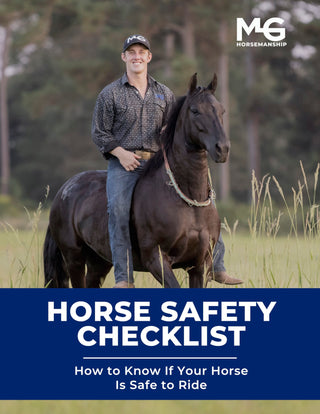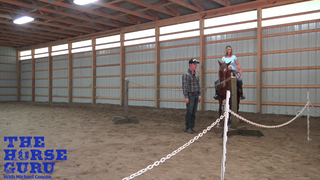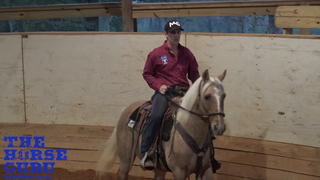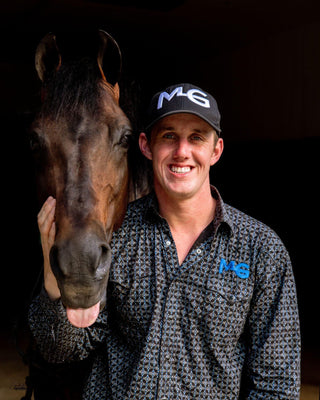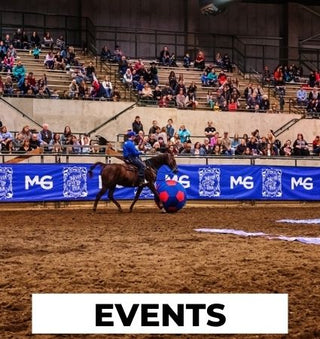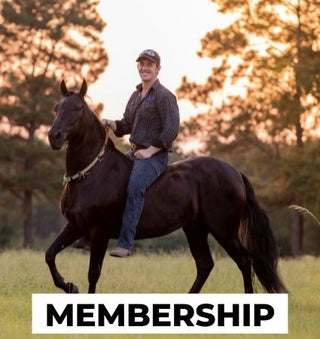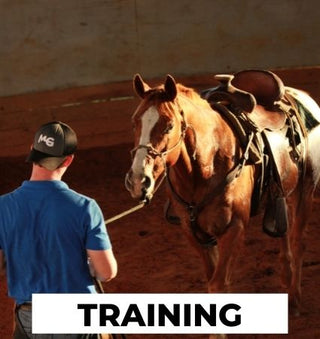Watch the Video Here or continue reading below!
Paso Fino horses are known for their incredibly smooth, four-beat gait—but the tack they wear during training and competition often leaves people wondering what all those reins and bits are for. In this blog post, horse trainer Michael Gascon explains the purpose and function of Paso-specific bits and hackamores, how they're used together, and why this equipment is essential in shaping a horse's collection, headset, and responsiveness.
🔗 Why Two Reins? The Double Rein Setup Explained
One of the first things riders notice about Paso Finos is that many are worked with two sets of reins—one attached to a hackamore and the other to a bit. While this isn't exclusive to Paso Finos (it’s also seen in classical Spanish riding), the technique allows for more refined communication with the horse:
-
Top rein (snaffle or hackamore): Used to pick the horse up and encourage softness and vertical flexion.
-
Bottom rein (curb or spoon bit): Used to help the horse tuck its nose and maintain correct collection.
This double-rein approach creates a more nuanced dialogue between horse and rider, especially during the schooling phase of training.
🪢 The Paso Hackamore: A Gaited Take on the Bosal
Modern Paso hackamores have evolved from the traditional rawhide versions to more refined tools made from biothane or leather. Similar in function to a cavesson or natural horsemanship halter, the Paso hackamore is built for finesse and control.
Key Features:
-
Leather band with internal nubs: Acts like the pressure points on a rope halter.
-
Braided bottom piece (bosal-like): Applies chin pressure when the horse leans into the contact.
-
Clip options: Reins can attach at the noseband for lateral work or underneath for vertical pressure.
The hackamore encourages vertical flexion and responsiveness without direct mouth contact, making it ideal for young horses transitioning into bitted work.
🪙 Paso Fino Spoon Bits: Lift, Tuck, and Polish the Gait
Once a Paso Fino horse has graduated from hackamore work, it's introduced to a Paso-specific bit—typically a spoon bit designed for comfort and precision. These bits aren't just for looks—they’re built to support advanced collection and gait quality.
Two Common Spoon Bits:
-
Straight Shank Spoon Bit:
-
Keeps the horse’s head high and forward.
-
Best for elevating the front end while maintaining contact.
-
-
S-Shank Spoon Bit:
-
Creates lift and tuck—raising the poll while encouraging the nose to come in.
-
Ideal for horses being finished for show.
-
Both bits feature rollers and spoon-shaped mouthpieces that help position the horse’s tongue comfortably and maintain a relaxed jaw, which is critical for smooth, consistent gaiting.
🔧 Why the Rubber Guards?
If you notice rubber or plastic guards near the mouthpiece on some Paso bits, they're not just for decoration. These cheek guards prevent the bit from pinching the sides of the horse's mouth—especially important with bits that have moving joints and connections.
📚 From Hackamore to Finished Bit: The Training Timeline
According to Michael Gascon, the double-rein setup is primarily used for schooling horses—those still transitioning from pressure on the face (hackamore) to accepting contact through the bit. This system gives the horse clarity without confusion. By age five, Paso Finos must be shown only in a bit, with the hackamore removed.
This age-based guideline ensures that young horses develop with a proper foundation before graduating into the high expectations of show performance.
✅ Gascon’s Modern Approach to Training
While traditional tack still plays a role, Michael Gascon emphasizes natural horsemanship principles and uses tools like the natural horsemanship halter to establish respect and clear communication. This modern method often accelerates the process of producing a finished horse in a comfortable and horse-friendly way—without over-reliance on pressure or outdated methods.
📌 Final Thoughts
Paso-specific bits and tack aren’t just flashy accessories—they’re purpose-driven tools that help shape a horse's gait, frame, and responsiveness. Whether it’s a bio-thane hackamore with pressure points or a spoon bit designed to lift and tuck, each piece of equipment plays a critical role in developing a smooth, collected, and show-ready Paso Fino.
By understanding why and how these tools are used, you'll gain deeper insight into gaited horse training and the art behind the Paso Fino’s elegance.



